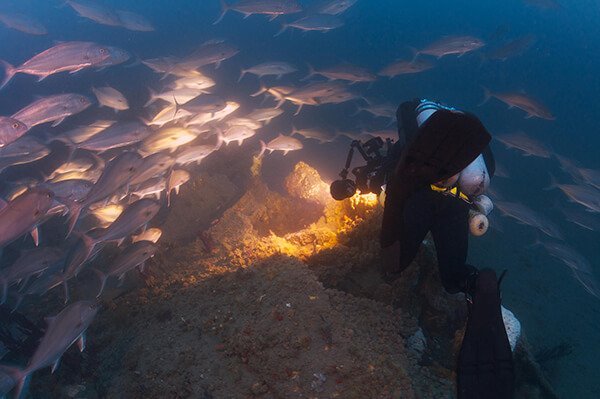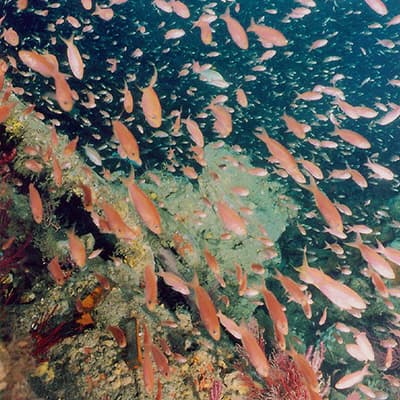Shipwreck Habitat and Biodiversity

Conservation Issue
Ecological data must be collected within Monitor National Marine Sanctuary (MNMS) to better understand the site's biological resources and the role of the USS Monitor as a habitat.
Description
MNMS was established due to the significance of the USS Monitor as a historical resource, and the majority of research that has been conducted has focused on that resource and its significance. However, the shipwreck also provides habitat for a diverse ecological community. Strategy RM-2 and Strategy RM-3 of the Resource Monitoring Action Plan section of the MNMS management plan highlight a need to collect new ecological data on the shipwreck and establish a long-term monitoring system for MNMS and its surrounding waters. This information can be used to compare natural and artificial habitat structures, identify changes over time, drive research needs, and enhance management actions.

Data and Analysis Needs
- Major habitat types found throughout MNMS
- Biological communities found living on and around the USS Monitor
- Biodiversity associated with natural and artificial habitats within MNMS and how they might be changing due to various pressures
Potential Products
- Scientific papers and reports on topics such as habitat distribution
- Maps of habitats
- Extensive list of flora and fauna located within MNMS
- Communication and outreach materials aimed at stakeholder and community member audiences that focus on shipwreck habitat biodiversity
For more information about this assessment, contact monitor@noaa.gov.

